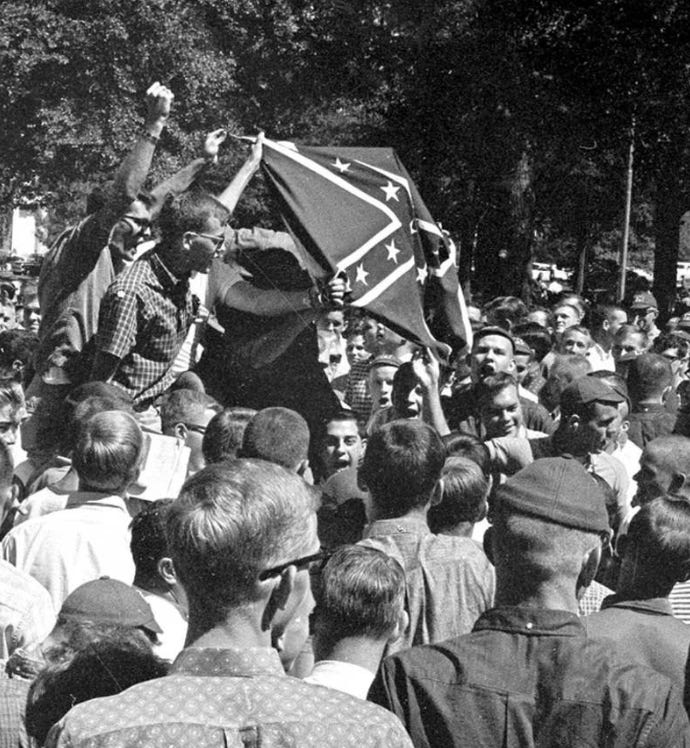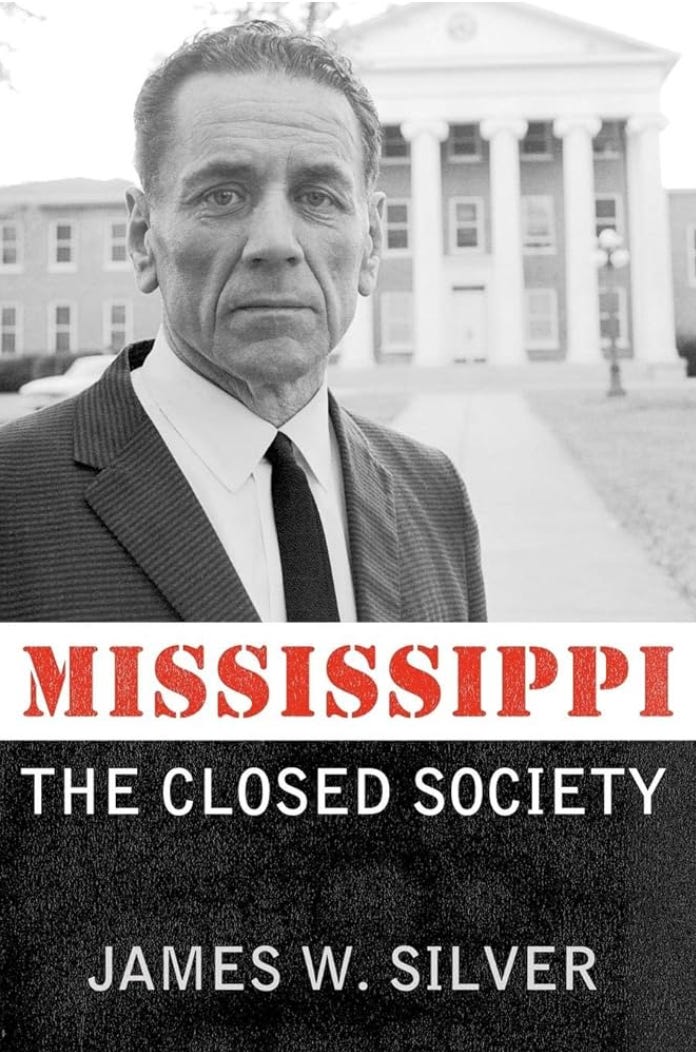Work in Progress is a recurring feature on CAMPAIGN TRAILS for paid subscribers. I’ll be using it to share some of the more interesting materials I’ve uncovered in the past few years of research for my book-in-progress on the work of John Doar and the Civil Rights Division in the 1960s. (If you missed my interview with legendary activist Dave Dennis, check it out here.)
This weekend marked the 61st anniversary of the integration of the University of Mississippi.
As much as any institution of the Jim Crow South, “Ole Miss” stood as a symbolic bastion of white supremacy. The flagship university in the state most dedicated to segregation, it still seemed in the 1960s to be stuck in the 1860s. The school’s athletic teams were named the Rebels, Confederate flags loomed large on campus, and even the “Ole Miss” nickname bowed to the antebellum aristocracy.
Not surprisingly, the drive to desegregate the school — initially waged on his own by a young veteran named James Meredith, but soon backed by NAACP lawyers and the Department of Justice’s Civil Rights Division too — was met with fierce resistance. There were seemingly endless rounds of negotiation and confrontation between state and federal authorities over Meredith’s admission, but it all came to a head over the long night of September 30-October 1, 1962, in what came to be known as “The Battle of Oxford.”
Meredith’s registration that evening was met by an angry mob of white students and segregationists from across the South. They threw rocks, bricks and bottles at US Marshals; they attacked Army vehicles and, at one point, commandeered a bulldozer to drive into the federal forces; and several had and used firearms. More than a hundred Marshals were wounded in the assault, some severely, and two individuals — a French reporter and a townie from Oxford — were killed by gunshots.
When the smoke cleared, the FBI conducted interviews with everyone they could find — federal officials, state cops, town politicians, university leaders, faculty members, students, onlookers, whoever. Transcripts of most of these interviews are now held in the Doar Papers at Mudd Manuscript Library, and they’re all fascinating reads.
But I want to share one account in particular here, the two interviews with Professor James Silver of the Department of History. Silver had already started speaking out against the authoritarian leaders of the state, but he hadn’t yet written Mississippi: The Closed Society (1964), a clear-eyed account of the “corrupt” world of the Magnolia State that would prompt segregationist investigations into his life, public demands for his firing and his eventual escape north to Notre Dame.
In these two interviews — one conducted just days after the riot, the other a few months after it — we get both an eyewitness account of the bloody riot at Oxford and a sense of Silver’s personal journey, in which he befriended Meredith, began to speak out more aggressively against segregationists, and finally wrote his masterpiece. It all begins here.
Paid subscribers can read the full interviews below:
Keep reading with a 7-day free trial
Subscribe to Campaign Trails to keep reading this post and get 7 days of free access to the full post archives.





